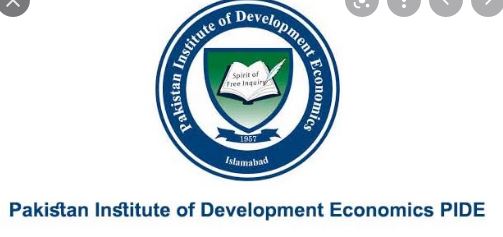ISLAMABAD: A study by the Pakistan Institute for Development Economics (PIDE) has found that 31 families dominate the Pakistan Stock Exchange and that the boards of directors of KSE 100 index companies are mostly filled with people close to these families.
According to a study by PIDE Vice-Chancellor Dr. Nadeem Ul-Haq and Amin Hussain, Small Club: Distributors and Networks in the Pakistani Economic Market, has mentioned that back in 2018, when this data was collected, 31 business families were dominant in the market, the study sheds light on corporate groups and their ownership in the stock market.
Dr. Mahboob Ul-Haq mentioned that back in 1967, there was a monopoly of 22 families in Pakistan. After 50 years, most of the Stock Market fortune was owned or controlled by 31 families.
The paper stated: “Pakistan’s stock market tends to make headlines, sometimes because of record highs that make it the ‘best performing market of the region’, and sometimes because of the crashes. However, the degree to which it contributes to capital formation in the country is not a topic of study, while the ensuing ownership and governance structure is hardly ever made a part of public discourse.
One such study concluded that ‘around 64 percent of the 44 selected sample companies are controlled by prominent business groups and families of Pakistan’. This paper extends the aforementioned research to cover the top 100 companies that constitute the benchmark KSE-100 index2 at the Pakistan Stock Exchange (PSX).
“It also analyses the structure of ownership and sponsor control of companies constituting the KSE-100, and their impact on the functioning and transparency of the stock market. Pakistan’s corporate governance and human resource management practices are frequently questioned in the media and academic circles. A common phenomenon is companies managed as family enterprises despite being listed on the stock exchange. The offspring of the owners tend to be absorbed into the management of these companies, which are referred to as ‘seth companies’, seth being the founder/owner of the company.
“The objective of this paper was twofold. The first is to shed light on corporate groups and their ownerships in the stock market. We review the ownership structures of the large conglomerates to examine the extent of diversification in the stock market. This also gives us an idea of the kind of power that large houses wield in the market, and the choices available to the small shareholder. Secondly, we look at corporate governance by looking at how company boards are structured and examine the influence of the owner and his family on the structure and professional management of the company. Prevailing accounting standards and listed entity regulations require disclosure of shareholding by directors, and significant shareholding of more than five percent held with legal persons (individuals or companies), in addition to those held with associated undertakings, banking and financial institutions, trusts, etc. Using data from disclosures in 2018, this study focuses on directorship and significant shareholding of five percent or more for all listed entities that constitute the KSE-100 index and uses it as an indicator of ‘control’ and concentration of ownership in the top 100 companies.
“Of course, this is after accounting for the government, multinationals and the army. The families have a fair degree of influence in the businesses because of haphazard privatization and relatively lax multinational regulations. The analysis has found fewer clusters as different clusters are linked through family associations i.e. if two members of the same family initially owned shares in companies that were previously in two different clusters, these clusters would now be linked since the same family has ownership in both.
“Apart from allowing us to aggregate family ownership in the KSE-100, changes in the structure of the network point to the influence of family ties on the overall structure of the network. If we consider family association unimportant, then the network looks as it did previously.
“On the other hand, if we consider families to be an important consideration, then this second network gives an insight into the ownership network at a family level. We now also add the field for the number of families in each cluster. Clusters that only have a single-family are usually family groups running their own business groups. In other clusters, we can see multiple families associated through shared ownership. The largest one here is Component 0, which now has 51 KSE-100 companies. It contains six families linked through shared investors and investment.
“The boards comprises similar people — corporate, business founders and family, retired and current members of the civil service, and the army. In other words, it parallels a membership of an elite club in Pakistan. What is surprising is that there is very little representation from civil society, i.e. professionals and academia of Pakistan. Women make up only about 10 percent of the board members in Pakistan. It is notable that a significant number of non-executive directors have served as government employees in the past, whether as bureaucrats, the military, or in regulatory bodies such as the SECP. The other notable concentration belongs to those identifiable as family members.
When we look at the network of directors, there is a high degree of connectivity, which should be of concern. Boards of directors for KSE-100 companies are all connected in small clusters, where a few members act as go-betweens through memberships on multiple boards, or as part of identifiable family groups.
“The network consists of 16 components, where a component refers to the subset of nodes that can be reached through continuous edges, i.e. without any breaks. Recall that components are distinct subgroups. It is apparent that a giant component connects 82 percent of the individuals in the network (this number reduces when families are included), with very few smaller components. This indicates that most companies in the KSE-100 are connected to each other through directorships. Only a very few (at most 15) do not share common directorships with other companies in the index.
“Looking deeply at the 20 directors with the highest betweenness centrality to see what we can learn from their characteristics. The highlights are as follows: Not surprisingly, there are no influential women. Interestingly, the most visible names are not on the list, their children are. The list seems to have many accountants, former bankers, NIT employees, and career professionals who have worked at these companies or groups.
“There does not seem to be much professional diversity in the group. It seems that most influential directors come from large metropolitan centers. They are mostly from Karachi, with Lahore being second. Islamabad has possibly one or two directors. It seems that many directors are reappointed in other companies as many of them have been on as many as 17 or 18 boards. The smallness of the club is once again reinforced.
“KSE is heavily skewed with the top 10 companies constituting more than half of total market capitalization. Annual reports show that directors or significant shareholders (73 percent of the total) hold ownership of over Rs4.963 trillion out of a total market cap of Rs6.8 trillion. This means that minority shareholders, holding less than 5 percent each, hold about 25 percent of the shares in each KSE-100 firm. Large firms such as Phillip Morris, Pakistan Tobacco, and Pak Suzuki are listed as mostly accounted for, as one or two legal owners hold over 90 percent of shares in the company.

















